Badminton is one of the most popular sports in the world because it’s easy to get the basics down and have casual games, but at the same time the sport has a high skill ceiling making it suitable for serious athletes. Of course, if you’re playing competitively you’ll need a marked-out court, but if you’re just messing around with friends you just need an open space, rackets, a shuttlecock, and a net.
However, when it comes to choosing a badminton racket you can be presented with an endless stream of choices, which seems contrary to the simplicity of the game. All of these pieces of equipment will claim to be the best racket for you, even though there are a number of features of a racket that can make them completely different to a competitor’s option. That’s also not even taking into account what style of badminton game you play, and things like your size and strength.
Contents
- What to Look for in a Badminton Racket
- Top 10 Badminton Rackets 2024
- 1. Best Overall Racket: Yonex Carbonex 8000
- 2. Best Budget Racket: Champion Sports Badminton Racket
- 3. Best Premium Racket: Yonex Arcsaber 11
- 4. Best Racket for Beginners: Yonex Nanoray 10F
- 5. Best Lightweight Racket: Yonex Nanoray Light 18i Graphite Badminton
- 6. Best Racket for Power Hitters: Yonex Astrox 88D
- 7. Best Racket for Outdoor Players: Li-Ning Power U-Sonic 67
- 8. Best Racket for Control Hitters: Yonex Astrox 88S
- 9. Best Kids Racket: Yonex Muscle Power 2 Junior Racket
- 10. Best Racket Set for Families: Senston Badminton Rackets x4
- A Guide to Badminton Rackets
- Cutting Through the Racket
What to Look for in a Badminton Racket
There are a number of factors that come into play when deciding what badminton racket to buy. While some are only important to take into account if you’re a serious player, there are some major decisions that need to be made regardless of the level you’re playing at. This will depend on many factors, like how often you’re playing, any medical history with regards to muscle and ligament damage, and how good your stamina is. Price is obviously also key, as it always is.
Level of Expertise
The phrase “all the gear and no idea” applies to badminton just as much as any other sports. Sure, a racket that costs half of your paycheque will probably improve your game slightly regardless of how often you play, but you won’t reap the full benefits until you know how and why certain rackets are better for you.
Beginners may struggle with the smaller sweet spot of an oval racket, or the heavier weight of a steel frame, but as they’re still building their badminton skills it won’t affect them too much. There’s also always the chance you might fall out of love quickly with the game, making a high-end racket an expensive mistake that lies in the back of your closet.
Better players will not only enjoy better rackets because of their ability, but also because they will know whether they’re more defensive or attacking in style. This means they can look for certain features that will enhance the best parts of their game.
Head Shape
As the head is where you (hopefully) make contact with the shuttlecock, it’s massively important for you to get the correct shape for your game. There are only two real shapes for badminton heads, and they’re pretty distinctive from each other: oval and isometric.
Oval
Oval head shapes are more traditional but are slowly going out of fashion. This is because their main advantage over isometric heads is that they offer more control and durability, but with advances in frame and grip technology the gap has shortened, if not disappeared completely.
Oval heads have smaller sweet spots, meaning that power players need to catch their shots perfectly to get the speed on the shuttlecock they need. The heads are also a sturdier shape, meaning that they usually last for a longer time, which is why they tend to get used on beginner rackets. However, thanks to advances in frame technology, the difference in durability is almost negligible.
Isometric
Isometric heads offer a much larger sweet spot, meaning they’re more forgiving. As mentioned above, this tends to mean less control when talking about just the shape, but with proper grips and the right racket balance this is easily countered. Most modern rackets use this head shape.
Materials
As is the case with most bat and ball sports, the original badminton rackets were made of wood. Nowadays wood has been replaced by various metals or metal composites, to allow for a lighter racket that doesn’t lose any durability. Sometimes the heads and shafts are made of the same material, but often they aren’t. The below refers to head (or frame, as it’s sometimes known) materials only.
Steel Rackets
Steel rackets are a cheap and cheerful option most suited to those at the start of their badminton journey. While there is a marked difference between them and higher quality rackets, if you just want to bat the shuttlecock around without investing too much money, they are an excellent choice.
However, there’s no doubt that if you’re keen on becoming a better player, or just want to play regularly, you should pick a racket made of something else. Steel is comparatively heavy and unforgiving, so can lead to inconsistency and fatigue.
Aluminum
A lighter, more technologically advanced alternative to steel rackets, aluminum rackets are most often used by beginner or intermediate players. The frame is much lighter than steel which allows for more control in shots and less muscle fatigue, which also means if you’re playing regularly it’s a good option.
A racket like this will lead to more consistency but does also sacrifice some power. If you’re not the strongest and still a beginner, then steel will probably be better for your game, although the comparative lightness of aluminum does mean you’ll be less fatigued towards the end of the game.
Graphite
Graphite is the predominant material that more advanced players use for their racket heads. Lighter than both steel and aluminum, yet just as durable, it allows for excellent control of the swing.
Not all top end rackets are pure graphite, but those that aren’t will be a combination of graphite and other materials. Graphite is still usually the main component. They’re sometimes referred to as carbon or carbon fiber rackets too.
Graphite blends in rackets may have different names, but these are mostly for marketing purposes. With that being said, regular and serious players may find it wise to look into these differences, but unless you’re planning on playing daily, then it isn’t something you should concern yourself with. Beginners will also likely be happy with a graphite shaft, but the lightness may take some getting used to, especially when it comes to timing shots.
There’s a lot more that goes into fine-tuning your choice for the perfect badminton racket, including the style of your game, the head, the grip, the strings, and the shaft, but with all of this in mind you should be equipped to look at our list of the best badminton rackets available today for beginners and experts alike.
Top 10 Badminton Rackets 2024
1. Best Overall Racket: Yonex Carbonex 8000

Editor’s Rating:
This Yonex model uses all the right materials that any good racket should. The weight alignment is mid balance so aimed at players who like to be all over the court, so you can hit lots of different shots with it. The tungsten and graphite shaft is also highly durable, which means it will last through heavy use and also won’t exacerbate injuries.
Although it’s probably more suited to intermediate and advanced players, even new badminton players will be able to see the quality in this racket. The fact it’s so lightweight makes it great for frontcourt shots, but it also sails through the air to get the most out of smashes. The isometric head also means it’s incredibly forgiving.
- Lightweight, minimising fatigue during long rallies
- Excellent value for money given the quality
- Still has massive power behind it despite being lightweight
- Outdoor players may find it too lightweight
2. Best Budget Racket: Champion Sports Badminton Racket

Editor’s Rating:
Sometimes in life the best things are free, or at least incredibly cheap. This piece of equipment from Champion Sports does what it says on the tin: it’s a badminton racket, and a pretty decent one at that.
Unlike the other name brand rackets on this list, the head of the Champion racket is a traditional oval shape and the racket is a heavier steel instead of the more common carbon. The strings are also designed to last, as opposed to being optimized for either power or precision.
However, none of this matters if you’re just looking for a casual racket. In that case, this does the trick and then some. On the other hand, if you do want to get serious about badminton without spending massively, then you should probably look at other beginner rackets.
The racket being slightly heavier means that it works well outdoor as well as indoor, which is great for casual players who just want to have a go at badminton and don’t mind where. Despite the cheap price, it’s super durable too, so you won’t be wasting any outlay on repurchasing after a few months. All in all, a steal for the price.
- Incredibly good value for money
- Durable enough to survive frequent use
- Very heavy, so unsuitable for players with damaged wrists or those who want to play mostly close to the net
- Not a good choice if you’re a regular player who wants to improve
3. Best Premium Racket: Yonex Arcsaber 11
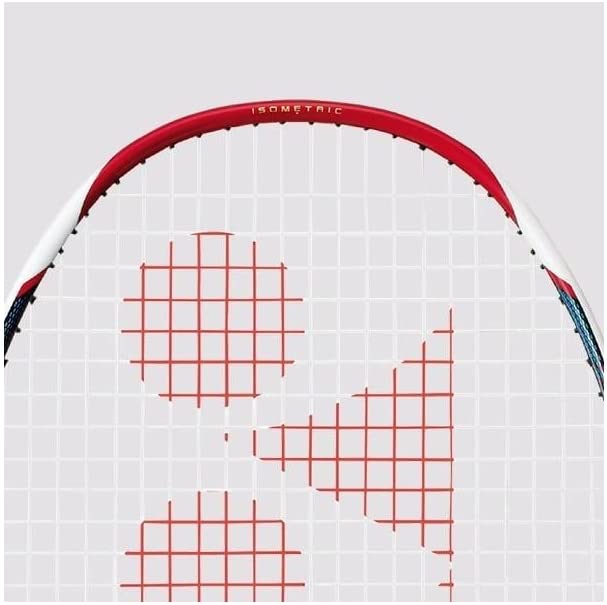
Editor’s Rating:
There are some things you need in a badminton racket regardless of your experience with the game. The Yonex Arcsaber 11 exceeds expectations when it comes to balancing these needs out, providing a lightweight yet powerful racket that works in frontcourt and backcourt. Great feel and control can often be sacrificed for extra weight that leads to more powerful shots, but not in this case.
The racket is also mid balanced, so works well for both rally shots and smashes. The isometric head also means a larger sweet spot than the more common oval you see on cheaper brands, so there’s much more forgiveness in the racket.
Usually, rackets like this can really only be appreciated by more experienced players, but even beginners will feel the benefits that come from such a lightweight and aerodynamic design, although given the price it’s definitely not a starter racket. It also allows for easy grip and string tension customization, so serious players can easily modify it to fit their game.
- Excellent control without sacrificing power
- Can be used by both doubles’ partners regardless of position on the court
- Can be used by both doubles’ partners regardless of position on the court
- Backcourt based doubles partners will benefit more from a racket that focuses on power
- One of the more expensive rackets out there, although definitely worth it for anybody who is going to be playing long term
4. Best Racket for Beginners: Yonex Nanoray 10F

Editor’s Rating:
If you’re a beginner to the game of badminton but have already fallen in love, then you’ll be wanting a racket that will enhance your game without costing an arm and a leg. If you’re new you also won’t quite have the need for customized strings and grips, so a pre-strung racket is ideal. The Yonex Nanoray 10 covers all of these needs and more, making it the complete racket for beginners.
The graphite frame is lightweight and mid balanced, so you can learn what parts of your game are your strengths naturally instead of being led by the racket. The shaft is also infused with carbon, giving it extra strength and durability.
The head is shaped to minimize air resistance the shaft isn’t too firm, so you have control over finesse shots. As discussed, it’s already strung to a medium tension, which allows you to figure out if your strengths lay in power or precision, which can help you when it comes to choosing your next racket. It also helps that the racket is incredibly easy on the eye, which is always a nice bonus.
- Reasonably priced for the quality it offers
- Good for all rounders or those who are still finding out where their strength lies
- Strong and durable
- Serious players will prefer a racket they can customize from the start in terms of string tension and grip
- If you are already sure of your style, this won’t really enhance your best attributes
5. Best Lightweight Racket: Yonex Nanoray Light 18i Graphite Badminton

Editor’s Rating:
This racket comes with a graphite shaft and frame, and a slightly shorter length means it’s as light as any piece of equipment can be. The racket is mid balanced, so it’s good for all kinds of player, even if you don’t want to sacrifice power too much.
With that being said, frontcourt players will enjoy how easy it is to whip this around on both the forehand and the backhand, meaning you’ll save points you might have previously let slip. Although it comes pre-strung, serious power players looking for something lighter can lower the tension and get that extra bounce on smashes and backcourt shots, but it will never beat a racket that’s been designed specifically for power hitters.
- Ideal for players who are prone to injury
- Quality materials mean its durable despite feeling so light
- Suitable for all but extreme power players
- Outdoor players will struggle in windier conditions
6. Best Racket for Power Hitters: Yonex Astrox 88D

Editor’s Rating:
For all the finesse and skill involved in badminton, sometimes you just want to unleash a real zinger of a shot. If you’re a power hitter or the backcourt half of a doubles partnership, then you can’t get much better than the Yonex Astrox 88D.
Like most high end rackets the head shape on this is isometric, so it’s extra forgiving for when you take those big swings. Even though the focus is on power, it still works well as an all-round racket, but that extra punch it packs really can make the difference in tight games. It can also be useful towards the end of a match when you’re fatigued and need that bit of help to finish off an opponent, although it won’t work as well at the net as other rackets.
- Great for aggressive power players
- Perfect for backcourt doubles partners
- Extra forgiving head shape
- Players who shape their shots would prefer something with more control
- Although the heavy head helps with creating speed during the swing, you may find your wrist and shoulder tiring after long usage
7. Best Racket for Outdoor Players: Li-Ning Power U-Sonic 67
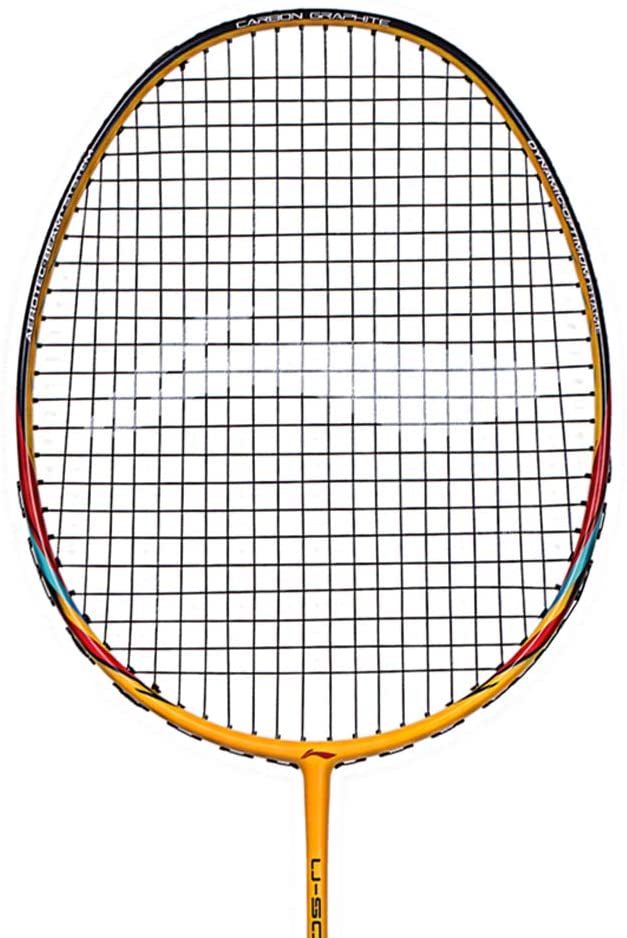
Editor’s Rating:
Finesse shots aren’t really for the sorts of conditions you get when playing an outdoor game, so you want something that can power through even the toughest of weather. However, you also want something with a light enough frame that it won’t tire you out, and still can produce the odd slice or drop shot when necessary.
Li-Ning have developed such a racket. The heavy head helps with getting the shuttlecock through any obstacle, but the light body means that there is an element of control. Even experienced players will be able to enjoy the benefits of this racket because of the quality design, which is more than can be said for comparable rackets.
The racket comes strung, but these can be easily modified to fit your game. The grip is also smaller which balances out the powerful head, making it a great all-round racket, and suitable for indoor play if you do want to change up your venue. However, for indoor players it will probably feel a bit clumsy in your hand, so it’s best to look elsewhere.
- Incredibly powerful
- Easy to use, so suitable for beginners
- Large and durable, making it great for outdoor play
- Not suitable for those looking to add a deft touch to their game
- The small grip can lead to an overreliance on your wrists to generate power, which can be harmful
8. Best Racket for Control Hitters: Yonex Astrox 88S

Editor’s Rating:
A bit shorter in length than its power hitting brother, the Yonex Astrox 88S is aimed at players who value skill over raw power. While the S certainly isn’t lacking in terms of power generation, it has a few modifications which make it ideal for quick hitting players who tend to play at the net.
The racket frame in the S has more give than the Yonex Astrox 88D, which means it’s easier to shape shots. Its smaller size means a bit less weight, which in the heat of a match can be the difference between a recovery shot and a lost point. With that being said, the S has a heavier head than a lot of lower quality rackets and rackets aimed at juniors, so you can hit hard winners with it too.
There’s a reason that the current world number one Men’s doubles team use the Yonex Astrox 88 pair. Collectively, they enhance all the best attributes of your game, and can really take you to the next level. Even if you’re a singles player, both work well as all round rackets.
- Lightweight material means you won’t get too tired after a long period of use
- Ideal for frontcourt doubles partners
- Isometric head for a larger sweet spot
- More expensive than average rackets
- Power hitters may find it lacks the oomph of other rackets
9. Best Kids Racket: Yonex Muscle Power 2 Junior Racket
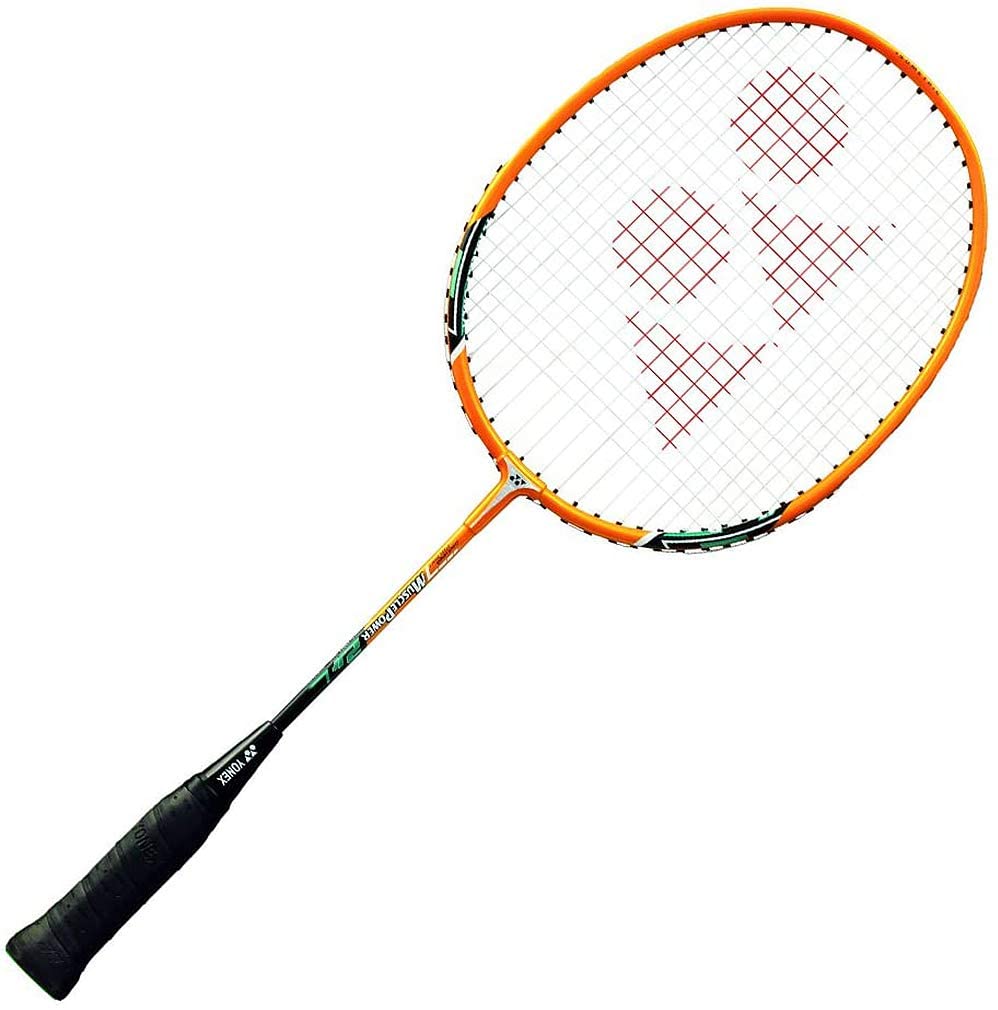
Editor’s Rating:
The Yonex Muscle Power 2 Junior Racket manages to get the best qualities of a high-end racket and cram them into this smaller version, making it suitable for kids. The isometric head means a bigger sweet spot to help younger players build their confidence and improve their accuracy. The racket comes strung, and the tension is on the lower end to give hits that extra oomph.
Featherlight and with a downsized grip, it’s suitable for children as young as three, so if you’re keen to get your child started early, this is the ideal racket. The frame is made of aluminum and is only 21 inches long, making it easily transportable.
- Lightweight so your kid won’t get fatigued
- Easy to use to avoid discouragement from the game
- A big sweet spot for maximum power
- Talented players will be limited by the fact the racket is made with ease of use in mind
- Small grip can limit power
10. Best Racket Set for Families: Senston Badminton Rackets x4
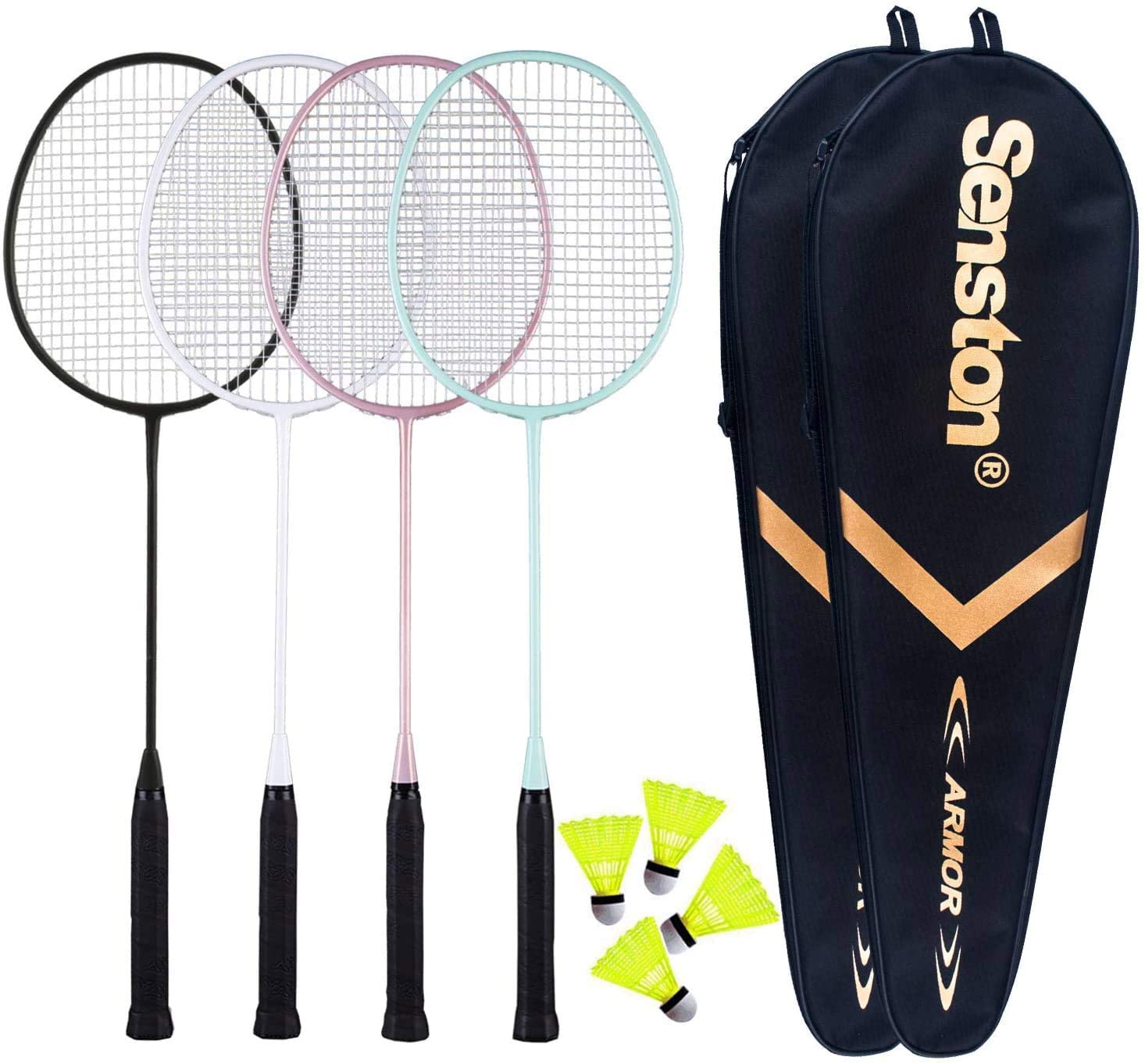
Editor’s Rating:
If you’re a casual player who just wants a dependable set of rackets for yourself and your family, then this buy from Senston is everything you need. The set comes with all the equipment required to play a casual game, and the rackets are durable enough for outdoor as well as indoor play.
Despite this, they’re also relatively light, which means less chance of causing or exacerbating injuries. The weight also makes them suitable for children, although they may be a little long for kids under five.
Despite the cheap price, the rackets are made with a quality blend of carbon and aluminum. The string tension is midrange, and the balance point is near the grip to avoid wrist exertion. The heads are isometric, so they have a larger sweet spot to encourage amateur players and make the game more enjoyable.
Although it doesn’t come with a badminton net like some other sets (you’ll need to buy one separately), the superior quality of the racket makes up for that, especially as nets are widely available elsewhere.
- Great value for money
- Comes with everything you’d need to start playing casually
- Each item is balanced and suitable for beginners
- If you’re looking at getting serious with badminton, these simply won’t cut it in terms of quality
- Doesn’t come with a net so you will have to order that if you want to set up a court
A Guide to Badminton Rackets
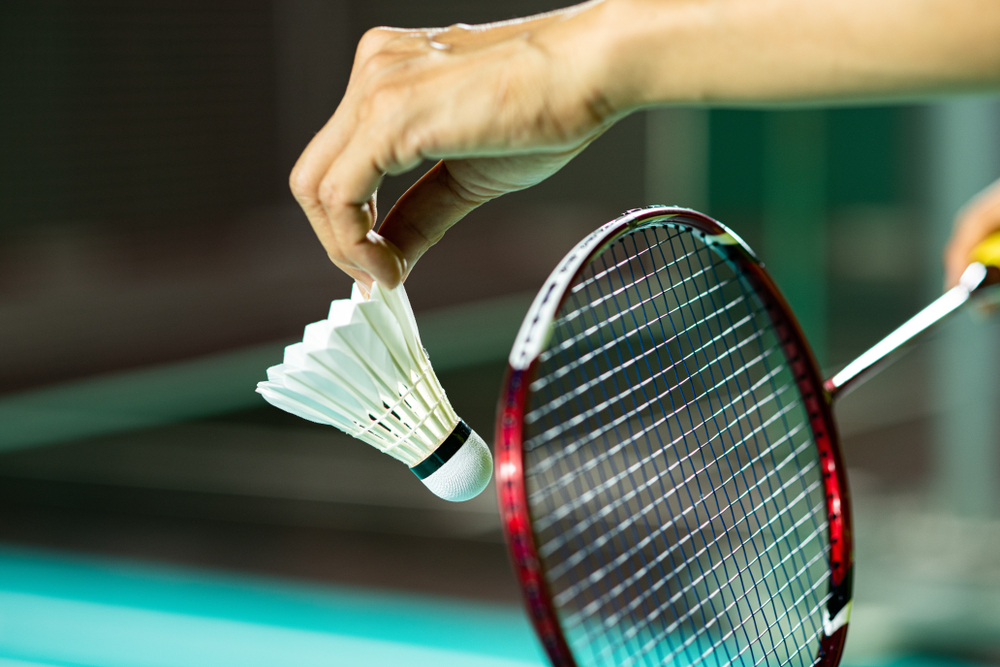
There are a whole host of factors that should contribute to your decision when choosing a badminton racket. Some of these are more important than the others, whereas some are only relevant when you’ve been playing long enough to understand your game a little more.
Singles vs. Doubles
There is a massive difference in what singles and doubles players need to improve their game. Advanced doubles players will also need to tailor their racket to their specific needs, which will depend on whether they play frontcourt or backcourt.
Singles Players
Singles players will benefit from an all-round racket that is mid balanced and not too heavy or too light. This isn’t to say that they should go for a totally neutral racket. After all, even as a singles player you will have your strengths which your racket should enhance.
For example, if you’re a power hitter then your racket should be head heavy and have a thicker grip, but it shouldn’t be as heavy or thick gripped as the racket of a backcourt doubles player, who will hit comparatively fewer finesse shots.
Frontcourt Doubles Players
If you play doubles and prefer the frontcourt because your game is focused on control and reflex actions, then you need a lighter racket. While 10g of difference may not seem like much in the grand scheme of things, in the split second between a smash going off an opponent’s racket and hitting the court on your side, it can make all the difference.
You should also look for a racket with smaller grips, as that allows you to whip the racket around with greater ease than a thick grip. Also, if you are getting a racket that’s already been strung, you should look for higher tension in the strings as that means the shuttlecock will bounce off the racket easily, making it perfect for deft shots at the net. It also means that the power you lose from having a lighter racket is mitigated when smashing near the front, so you can still deliver those quick hits for a win.
Backcourt Doubles Players
Backcourt players rely primarily on power and timing, which means they need rackets which are head heavy and have stiffer shafts. Having a larger grip also helps as it allows for you to swing more powerfully without losing as much control.
Having lower tension strings is also needed as the extra power you get from having a full swing and heavier racket means the shuttlecock will go far enough. Having strings that are too tense can lead to a lack of control and many lost points.
Indoor vs. Outdoor
Where you play your badminton will have a massive impact on what sort of racket you need. The reason for this is fairly obvious: if you’re outside, you need more power to counteract the wind. You also may need to change your grip to help without the weather.
Competitive badminton will almost always take place indoors. This is because of the aforementioned factors. This means that a racket should be chosen based entirely on your game if you primarily play indoors.
However, not everybody who takes up the sport will be playing competitively or have access to indoor courts regularly. That doesn’t mean there is a lack of competitiveness in the games; you will still want to win, even if it’s just a friendly game. If you are going to play outdoors, you need a racket that’s more suitable for those conditions.
If you’re from a country with changeable weather, then you need to make sure you have a more absorbent grip, so the racket is less prone to slipping.
Head Weight and Balance Point
The head weight of a racket is incredibly important, especially to more advanced players. While beginners may struggle to feel the difference between 90g and 110g, a seasoned player will pick up on it automatically, especially when that extra weight is all in the head and not the shaft or grips.
Rackets with heavier heads tend to produce more power because the extra weight means gravity is helping your swing quicken up. It also means there’s more force behind the hit in general.
Rackets with lighter heads offer more control, so if you’re playing in front court or like to shape your shots, you can whip the racket around quickly to get that spin. They’re also better for players who fatigue easily.
It’s not just about weight, though. The balance point is important and is split into three main categories: Head light, mid balance, and head heavy. The balance point is measured by seeing where the racket will balance in relation to the handle end.
Head Light rackets tend to balance between 270 and 275 mm from the handle. Mid balance tend to fall into the 275 to 285mm range, and above 285mm is head heavy. Head Light rackets are better for defensive play at the net, and Head Heavy rackets are better for power hitters. As the name would suggest, mid balance rackets are a neutral option.
Grip Size and Material
There are a number of factors when it comes to choosing the perfect grip for your racket. As discussed, if you’re an outdoor player you’ll need a more absorbent grip, and this is also the case if your hands tend to get sweaty during exercise.
In terms of grip size, you will need a larger grip if you are primarily a power hitter. However, grip sizes are all relative to the size of your hand, so what may be a small, control grip for one person could work as a thick grip for another.
Grip Sizes
Grip sizes for many brands, including Yonex, which features heavily on our list, follow the below scale. If you’re unsure on size, it’s better to be under than over, as that way you can add tape to thicken it without having to spend money on getting it regripped.
G2 is generally where the scale starts and will be the best size for large handed players who are also power hitters. The size of this grip is usually around 4 inches, although this can vary depending on manufacturer.
G3 is still considered large and will be the size many power hitters with fairly average sized hands will be using. The grip is around 3.75 inches, although again this varies depending on who made the racket.
G4 and G5 are seen as the “average” size grips and what most rackets will come with. G4 is about 3.5 inches and G5 is anywhere between 3 and 3.25.
G6 is the smallest of the adult sizes you can usually get without going to a specialist and is under 3 inches. These are great for finesse hitters who want to have total control of the racket but will impact the power you can achieve.
While the general advice on sizing holds true for all rackets, be sure to double check that the company you’re looking at follows this scale before buying.
Grip Material
There are two main types of material for Badminton grips: towel and synthetic. Towel grips are more absorbent and great for players who are playing in changeable conditions or tend to perspire a lot during games. They’re also generally more comfortable, and their softness means that finesse and control players tend to prefer them as they offer more “feel”. However, they need to be changed more often.
Synthetic grips are less comfortable and generally slicker, which can be an issue for some, but also means they need to be replaced less often. They’re great for power hitters (who don’t sweat too much), although the material you choose for your grip should be chosen because of comfort more than anything else.
Overall Racket Weight
Racket weight is linked heavily to head weight but has less of an overall impact on your game and is more about fatigue levels. You can get light rackets that are still head heavy, for example.
Weights are usually done in grams, but badminton also uses “U” as a general catch all measurement. The lower the “U” the heavier the racket.
The heaviest rackets (1U) are between 95 and 99g, and mostly used for training.
2U is 90 to 94g, and best used by singles players who focus on power.
3U is 85 to 89g and best used by attacking doubles partners (or backcourt players).
4U is 80 to 84g and great for more defensive/control focused single players, as they spend most of their time at the net and need to move quickly.
5U is 75 to 79g and best used by defensive doubles players.
String Types and Tension
Lower end or beginner rackets will usually come with strings already in the head, and you most likely won’t need to make any changes to these as they’re usually mid-range in terms of tension. Also, some higher end rackets that are primarily based at specific types of players will also come with the strings attached, as they know what their customer is looking for in a racket and have customized their product as such.
Thinner strings tend to be more powerful but also break easily. Also, thickness is less important than tension, which is the most important thing to consider when choosing strings for your racket.
Generally, more powerful players will use less tense strings, as they are generating power through their swing and racket head weight. Lower tension also means a larger sweet spot, which is important when you’re swinging hard.
Having tenser strings is a great advantage for defensive players, who spend more time at the net. It means the shuttlecock is going to bounce off your racket with greater ease, which in turn means you can focus on getting your racket to where it needs to be instead of generating power. However, it means a smaller sweet spot, so if you’re at the back of the court you’re liable to hit an errant shot.
Shaft Flex
Once again, the ideal shaft flex for you will depend on your game and your experience. Defensive players and beginners will prefer a softer flex, which generates more speed without needing a powerful swing.
Power hitters need stiffer shafts as the power is generated by the swing. A shaft that’s too flexible will lead to errant shots as the head is left too far behind at the point of impact.
However, shaft flexes aren’t standardized, so you may find a medium shafted racket works for you just as well as a stiff one from another brand.
Cutting Through the Racket
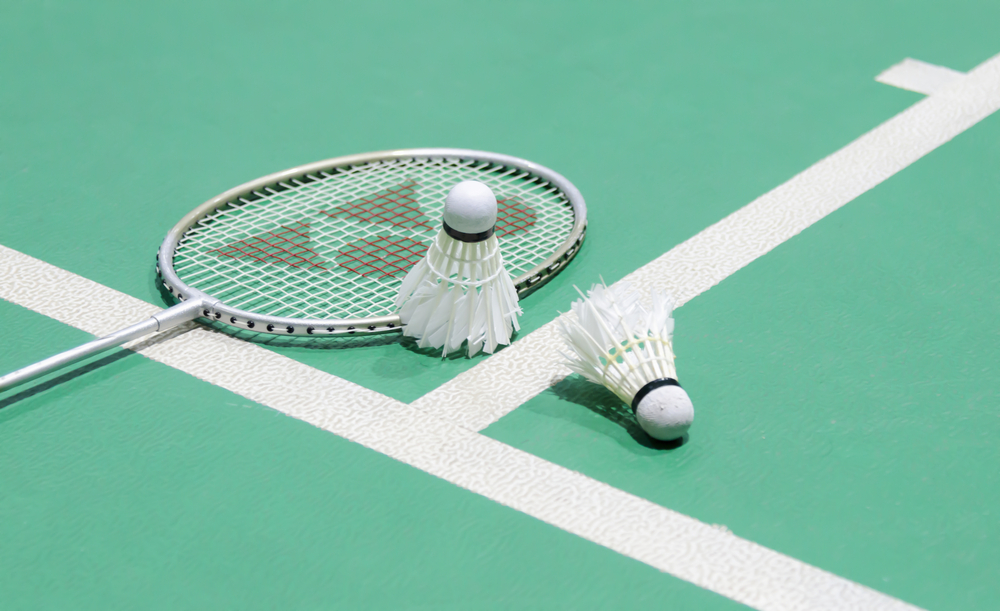
Like so many sporting equipment choices, there’s no one size fits all approach or magic formula to choosing the ideal badminton racket for you. Moreover, no piece of equipment can beat out practice and dedication when it comes to improving your game. With that being said, If something feels right in your hands and you play well with it, then that’s the main thing that matters. However, if you follow the above tips, you’re more likely to find a racket that does just that, improving your game and making it a lot more enjoyable.
